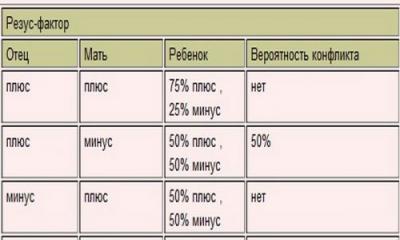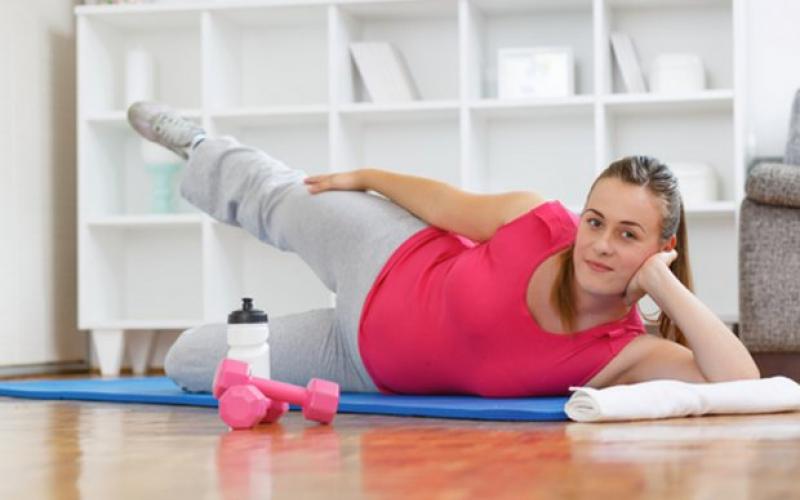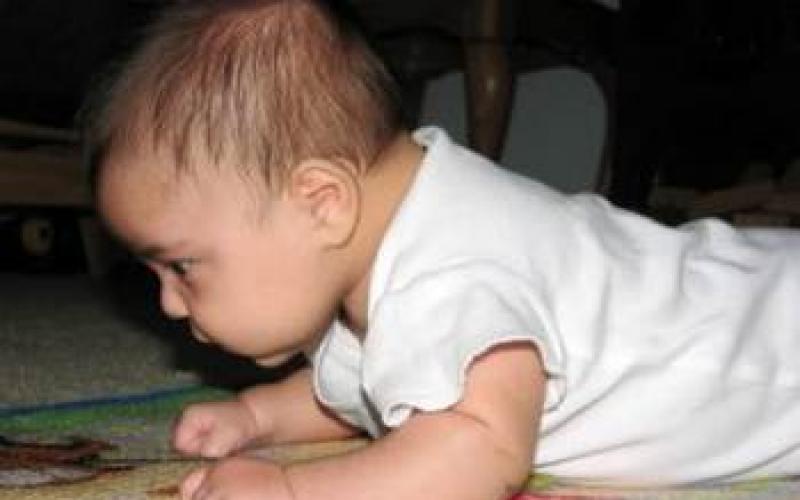The lilac color is included in the palette of violet colors, formed by mixing the two main ones - blue and red. However, lilac is a lighter tone, and this gives it a touch of sophistication, femininity. A lot of nuances and a combination of lilac give unique combinations with other colors, respectively, the ability to create different images.
Beautiful bedroom in lilac color

Lilac color in the interior of a bright bedroom

Modern
The average person will call this tone light purple, and designers highlight many of its nuances:
- pale lilac;
- violet lilac;
- purple;
- lilac amethyst;
- dusty lilac;
- violet;
- lavender;
- blue-lilac.
Differences in nuances are explained by the difference in the ratio of blue and red in their composition, additives of other colors. So, the lightest, pale lilac tone is characterized by a high content of white, and the darkest is blue-lilac, it would be more correct to call it blue with a lilac tint.

Lilac bed in the interior

Color combination tables
The features of the lilac color, its constituent components, dictate suitable color combinations, which can be presented for convenience in the form of a table. This table will help to choose the right wardrobe items for a woman, to create a harmonious interior in the house.
|
Comments |
||
|
Pale lilac |
- beige golden; - light yellow; - pink; - mint; - apricot; - blue. |
The lightest shade of the lilac scale in clothes will allow you to create a delicate, sophisticated image of a young girl, suitable for Spring, Summer, Winter color types, not recommended for Autumn. |
|
Purple lilac |
- warm tones of beige; - peach; |
In the interior it is used to decorate a children's room, a romantic bedroom, Provence and shabby chic styles |
|
Purple |
- pink; - red; - Violet; - brown; |
A classic color for a blouse, turtleneck plus a strict gray suit or skirt is an ideal option for an office style, and in combination with a denim suit - a set for a walk or a date. Various combinations make this color popular. Suitable for all color types, except for Summer. |
|
Lilac amethyst |
- pink; - yellow, golden; - mint, menthol; - beige; - peach. |
A shade with an admixture of pink will suit girls with any skin color, except for summer. This shade is dynamic, it can be found in sportswear and casual styles. |
|
Glycine |
- light pink; - red; - light yellow, gold; - beige and brown shades; - blue, gray-blue, denim. |
The gray-lilac shade combines the romance of purple with the calmness of gray, suitable for all color types, except for winter. |
|
Violet |
- soft green; - dusty rose; - beige; - milk, cream; - light yellow; - mint green; - darker tones of purple; - the black. |
Delicate, pure color - refreshes the face, lifts the mood. It can be combined with lighter colors of a violet palette or with darker ones, in the interior it goes well with a light gray, milky background, only violet should be no more than 25%. Looks harmoniously in the bedroom, living room, bathroom. |
|
Lavender |
- pink; - coral; - light green, lime; - yellow orange; - blue; - blue-violet; - dark purple. |
Lavender is recommended to be combined with contrasting shades, this is the color of the dress for self-confident girls, it is not suitable for a strict office style, does not adjust to a working mood, but like no other is suitable for creating the image of a mystery girl. For the interior, you can choose it as a background. |
|
Blue lilac |
- light pink; - apricot; - wormwood; - malachite; - light blue; - beige, brown shades |
Light - suitable for a casual look, dark - for evening dress... Like lavender, it inspires confidence, which the presence of blue gives it, is associated with a holiday, rest. |

Room design in lilac color

Lilac color in the interior of the apartment
Psychologists say that the lilac color symbolizes the future, immaturity - that's why children and adolescents love it. Its adherents are dreamy natures, subtly feeling, they deeply experience parting, loss. They are creative individuals, patient and helpful, but at the same time prone to depression.

Room design with lilac color

Lilac furniture in the interior

Living room design in lilac color
In clothes, lilac gives many possibilities for combinations, but in the interior it should be used carefully where households spend little time - in the bathroom, for example. Lilac and lavender will give the room warmth and comfort, they harmoniously fit into many styles and are combined with both light, pastel tones, and with bright, rich and even dark - grape, black.

The combination of lilac in
bedroom design

Beautiful apartment design in lilac color
The combination of lilac color
In addition to the fact that the color itself creates a psycho-emotional background, its combination with various colors also makes an impression on a person in its own way.
Lilac color and light shades
All the nuances of lilac are in harmony with white. If white dominates, a very delicate composition is created: white becomes brighter, and lilac - richer. If the main background is lilac, white lightens it. This shade is light in itself, so no color overload occurs.

Light design in lilac color

Lilac color in the interior

Beautiful design in lilac color
Neutral pastel colors are more often used as a background, the combination with lilac allows you to create a light, airy atmosphere, therefore they are often used in the bedroom, living room, in children's rooms for newborn girls. Again, white is recommended as the third color. It is better not to add bright accents - so the atmosphere in the room will be more gentle.
Such shades are often used to create designs in Provence, shabby chic styles, which are characterized by a gentle, airy element.

Bedroom design in lilac color

Lilac color in the interior
Lilac and black
Difficult because the wrong ratio will create a dark space. One more color must be added to the combination of lilac and black, more often light. It acts as a background, it can be sand, beige, cream, milky and even white tones, lilac acts as an additional color, and black emphasizes details, observing the rule of a harmonious combination of colors 60:30:10.

Light room design in lilac color

Lilac color in the interior of the living room

The combination of lilac and white in the interior
An unusual interior can be created by combining shades of purple with black, for example, in the kitchen:
- black background - walls and floor - and glossy lilac furniture facades;
- neutral walls, the lower cabinets are black, the upper hinged ones are lilac;
- black kitchen set, bright lilac apron, white countertops.
Such bold combinations are expressive and dynamic. They do not accept additional decor details, they are self-sufficient.
But remember: the lilac color, like its shades, adores lighting - if the room is small and there is not enough natural light, it is better to refuse such combinations.

Modern design in lilac color

The combination of lilac color in the interior of the kitchen
Lilac and gray
A very pleasant and harmonious relationship, both in clothing and in the interior.
Designers recommend making light gray a background color, and juicy, saturated shades - violet, lavender - as additional colors. With this combination, the blue tones included in the lilac are deprived of gloom and negativity.
Light shades look harmonious in children's bedrooms, teenage rooms. Light gray in combination with white can be the main tones, then the color accent can be made on violet. An unusual but dynamic combination: gray and white striped walls and furniture (or textiles) in bright colors.

Shades of lilac in the interior

Bedroom design in lilac color

Dark lilac color in interior design
Unusual and mysterious, the many-sided His Majesty lilac allows you to create different images - from light airy-ephemeral, breathing youth and freshness - to strict, elegant, mysterious and charming. It all depends on the correct combination and correct ratio of colors.
Video: The combination of colors in the interior
50 photos of examples of apartment design in lilac color:

















A complex lilac color very often causes difficulties when making combinations. In color, lilac refers to shades of the third order, therefore, for its combination, more nuances must be taken into account than with other color solutions. The combination in which is the main one can be bright or delicate, depending on the choice of additional shades.
What is lilac color?
The very name of the color already gives us an idea of \u200b\u200bits shade. The difficulty in identifying lilac is that it is often confused with purple, with which they are really close "relatives." The difference is in intensity. Like violet, lilac is a combination of red and blue, but there is a little more of the former in it than in its more saturated “brother”. To reduce the brightness, a third color is added to the lilac - white. This makes it difficult and belongs to the third order group. Recall that all colors, depending on the complexity, are divided into three groups:
- Simple are primary colors that cannot be obtained by mixing (blue, red, yellow).
- Shades obtained by combining two main ones (brown, orange, purple). They are called second order colors.
- Complex tones obtained by combining 3 or more colors (lilac, salmon, blue-green, yellow-orange). These are colors of the third order.
The hardest to combine are the colors of the third group. Therefore, combining lilac with other colors is not an easy coloristic task.

Shades of lilac color and their names
It is not easy for an untrained person to distinguish coloristic nuances. Shades of lilac can differ in several ways:
- By intensity... The degree of brightness allows you to highlight shades such as pale lilac, light lilac, lilac, bright lilac, dark lilac.
- By warmth... Traditionally, lilac is considered to be like violet - however, the volume of red tone can bring it closer to warm. On this basis, shades such as periwinkle (cold, light shade), wisteria (warm, light), orchid color (medium warm) are distinguished.
- By the prevailing tone... The dominant color is also a classification feature. In lilac, two main ones (red and blue) can prevail, they can have varying degrees of severity. This leads to the appearance of such shades as pink-lilac, blue-lilac, lavender, amethyst. Gray, beige can be mixed into the lilac color, then we can talk about such shades as gray-lilac, beige-lilac.

Perception of lilac color
Any combination of colors, lilac is no exception, evokes various sensations, emotions and associations in a person. Complex shades tend to evoke ambiguous feelings and associations. Traditionally, lilac is associated with tenderness, serenity and tranquility. He almost leaves no one indifferent, he is either very much loved or completely rejected. The balance of red and blue in lilac evokes harmonious balanced emotions when perceived. The presence of a white tone enhances the sense of coherence. Interestingly, the combination of lilac with other colors can give it additional possibilities. The so-called color reflex can make it warmer or colder, which affects its perception.

Color wheel combinations
To simplify the procedure for selecting color combinations, I. Itten, on the basis of many years of research, created in it tones are distributed in a spectral sequence. Inside the circle is a triangle of basic red and blue. The second tier is a hexagon formed by the shades obtained by mixing the primary colors: purple, green, orange. The outer tier, a circle, is formed by 12 tones that change from one to another. It is these shades that make up the spectrum. All colors are in a natural relationship with each other. They may be:
- Related... These are shades located next to each other. There are four groups of related colors in total: yellow-green, red-blue, yellow-red, blue-green.
- Contrasting... These are colors that are opposite each other in the color wheel. For example, lilac and yellow will contrast with each other.
- Complimentary... These colors are defined using a triangle, the sharp point of which will be the base color, the other two vertices indicate adjacent colors that enhance the base color. For example, in relation to red-violet, yellow and green will be complementary.

Related and monochrome combinations
Analogous and monochrome palettes are some of the most difficult to combine, as the colors in the combination must match in warmth and tonality. Monochrome combination will be colors within one cell in the color wheel, differing in intensity. For example, light lilac can be combined with dark lilac or bleached pastel lilac. Such combinations look very stylish and harmonious, they are pleasing to the eye. But when combining them, you need to carefully check the shade, since the combination of warm and cold tones can create a feeling of variegation and sloppiness. A variety of monochrome palette will also be a combination of lilac and white flowers... Cold white will perfectly emphasize the sophistication and tenderness of lilac. Rose-lilac and blue will be related colors in relation to lilac; when choosing them, you need to carefully check the tonality. The selection of similar combinations is based on a combination of two or three nearby tones. For example, pink, salmon, light blue-violet and light blue are suitable for lilac.

Complimentary separate combinations
A separate complementary combination of colors can be simple and effective. The lilac color will become expressive and effective with such companions as lemon yellow and turquoise green. The choice of saturated colors allows you to create a very expressive palette, but if you stick to less intense colors, you can get a delicate and sophisticated composition.
Contrasting combinations
The most striking and expressive are contrasting combinations. Their main charm is that they most fully emphasize and reinforce each other. Contrasts are best distinguished by our eye. They can be built according to:
- Drowning... In this case, the opposite will be the combination of yellow and lilac, i.e. colors that are located in a circle opposite each other.
- Saturation... In this case, the colors are selected within the stretch of one tone. In this case, dark lavender and pale lilac will become contrasting.
- Warmth... It is possible to create compositions with warm and cold shades, although this requires a lot of color flair and a trained eye to avoid lurid combinations. Purple-lilac will become a cold amethyst contrasting companion.
Complex color solutions
Combining shades of the third order creates intricate combinations that reveal themselves upon close examination. Usually a nuanced combination of colors - lilac and aquamarine, lilac and salmon - looks unusual and can be difficult to perceive. But that is what makes them so expressive. Complex color solutions can also include:
- lemon and dark orchid;
- a combination of bright emerald and rich lilac;
- contrast of turquoise and amethyst.
These are the main nuances that you should pay attention to when combining colors.
Still, there are colors that are most beneficial to you. And their skillful combination with the rest creates the concept of elegance and taste. Dressing in monochrome, when all the details of your toilet are the same color, has long been a sign of bad taste.
There are few exceptions to this rule - if you are not a bride and not in mourning, then there should be three shades in your clothes - the main color, an additional one that harmonizes and sets off the main and, possibly, a contrasting detail, an intriguing color accent. Choosing and combining them correctly is often a very difficult task.
The lucky few, naturally endowed with a delicate artistic taste and color perception, can pick up color scheme wardrobe, relying on your intuition. Everyone else, in order to always be stylishly and tastefully dressed, needs to study several rules established by Sir Isaac Newton!
White - with everyone
Beige color boldly combined with calm tones, and can also be combined perfectly with more saturated and bright tones. Beige color is combined with colors: khaki, marsh, cocoa, gray, gray-brown, chestnut, chocolate, yellow-green, olive, rusty brown, terracotta, eggplant, purple, bright blue.




Pink color - with white and pale blue, with light gray, intermediate between red and white tones.
Red color - with yellow, white, brown, blue and black, purple and pink, black and silver, black-brown and sand. The red tones are now boldly mixed with each other, and look stunning at the same time. A more moderate option is to combine red with black.


Bordeaux - the color of a woman who knows her own worth. Bordeaux is combined with black and dark blue, as well as with flowers: green, olive, gray, blue-green, tomato and other shades of red. Berry tones go very well with burgundy: blackberry, blueberry, elderberry.


Fuchsia, crimson, purple colors are combined with colors: yellow, orange, dark green, green, bright blue, violet. The raspberry color also harmonizes well with pink and white.

Coral color has twelve varieties, these are pink-orange shades, and rich red-orange. Combines with colors: white, beige, gold, flesh, brown, dark brown, khaki, shades of gray, scarlet, pink-peach, lilac, lilac, hot pink, orange, yellow-orange, pale yellow, dark blue , gray-blue, black.

Yellow - personifies the sun, wisdom, fun, self-confidence and freedom. Gold is the color of fame and fortune. Yellow is combined with colors: marsh, blue-green, orange, warm brown, chocolate, black, dark blue.
The golden color goes well with flowers: olive, brown, red, purple, dark green, purple. Yellow color - with blue, purple, lilac, turquoise. Yellow color without decoration or addition to it is unattractive.
Yellow combination table


Orange color - cheerful, bright, summer and positive color, dynamic and ethnic, the color of the shine of the setting sun. The bright orange color goes well with bright colors: bright yellow, mustard, beige, purple, brown. Muted orange or terracotta goes well with calm shades - pale yellow, gray-green, khaki, brown, chestnut, chocolate, dark blue or dark gray. Contrasting black is very suitable for orange and yellow colors.
Orange combination table

Brown color - with heavenly, cream, yellow, green and beige, denim blue, smoky blue, light green and white; May grass color and very light green, lilac with pale pink. Brown is combined with olive, golden, blue-green, orange, lilac, light pink, all shades of beige, ivory and gray. An unexpected and extremely successful combination of warm brown and turquoise will make a great impression.
Rusty brown is combined with plum and brown; purple with orange and creamy white; light green with camel; red with yellow and creamy white; brown with blackberry.
Brown combination table




Green color - with brown, orange, salad, yellow and white flowers and only light greens - with gray and black tones. It is intermediate between cold and warm tones.
Green combination table



Olive color in harmony with colors: blue-green, warm green, khaki, apple-green, herbal, eggplant, burgundy, cherry, purple, dark purple, brown, golden, red, orange.


Mustard matches colors: brown, chocolate, terracotta, yellow, beige, khaki, blue-green, coral, hot pink.
Blue goes well with orange; brown and peach, khaki and faded orange, creamy white, blackberry interspersed with brown, light brown and tomato; grayish orange and purple.
Mustard color combination table



Night blue combine with acrid pink with coniferous green; red and white; pale pink with dark brown and silver; May greens with blue-green; gray with bright yellow and pale pink.
Blue comes in light and dark tones.
Light blue - with white, yellow, orange, pink colors, is intermediate between red and blue.
Dark blue - with light blue (blue), gray, red,
denim blue, smoky, plum blue; with green and white; gray, light pink and brown; pink and green-blue; vanilla yellow and light blue; dark brown, lilac.
Blue color combination table


Blue matches with colors: pink, lilac, coral, light purple, yellow, bright blue, dark blue, gray, white, beige. Turquoise is combined with white, yellow, orange, purple, blue-green.
Blue color combination table



Lilac pink combined with lavender and dark blue; dark brown with pink-red; brown with light brown; gray with denim blue and yellow, goes well with lavender.
Purple color - with white, yellow, orange, pink colors, it is intermediate between red and blue. Light shades of purple are called lilac. They are combined with yellow, orange, gray and white colors.
To the lilac color include the color of violets or dark lilac inflorescences, purple. Lilac is the color of femininity, associated with refinement, grace and elegance. Lilac is best combined with dark neutral shades - with black, gray or navy blue.
Purple - the color of nobility and luxury. Works best with blue. Lilac color and all kinds of its shades are considered one of the sexiest, mysterious, mysterious and sensual colors. The lilac color goes well with flowers: pink, white, blue, lilac of a darker or lighter shade, lemon, the color of a withered rose, silver shades, blue, cornflower blue, lilac and purple.
Purple and purple combination table


Grey colour - the color of elegance, intelligent, harmonious, soothes contrasting combinations, is used in business dress code... Light gray looks good in the finest natural lace or sensual silk, graphite gray in suede, and smoky gray in fine wool.
Gray is boring, so it is better to combine it with contrasting colors: white, blue, black, burgundy, red. For an elegant outfit, it can be combined with other shades of gray, lighter or darker, and even beige. Light gray is best combined with pastel tones: pale pink, yellow, lilac, blue, purple, coral.
Blue-gray goes well with ocher, white and brown; with brown and beige; with purple and pink; with lobster red, turquoise and white; with silver and blue; with May greens and white.
Gray color combination table



Apricot xgoes well with camel and brown; light brown, beige and interspersed with pink; gray-blue, blue and ocher; sky blue; green, white and silver; red and white.
Camel is combined with gray-blue and purple; beige-brown, blue and lilac; ocher and brown; yellow, red and white; green and white; lobster red.
Khaki goes well with gray-orange and tomato; lobster red and white wool; blackberry, plum and yellow-gold; golden and blue-green; red, pale green and peach; purple, red and peach.
It's even better if a solid khaki is paired with a printed garment in these bold colors.
Khaki color combination table




Black, white and gray are used as trim.
The black color looks good next to orange, yellow, pink, red, lilac and salad tones, with acrid pink, gray, lemon, indigo, gray, juicy green with azure, pale green with bright green.
The correct combination of colors in clothes will make your look complete and harmonious. General rules say that this can be achieved by combining:
- strong contrasting colors, for example, red - blue, red - white, red - cornflower blue, red - green, orange - black, orange - cornflower blue, green - white. Such combinations are used in sportswear, children's and youth clothing;
- contrasting colors, for example, cherry - pink, blue - cornflower blue, purple - lilac, green - salad. Such combinations are used in different types clothes; semi-tonal colors, for example, soft pink - soft blue, soft salad - soft lilac.
- solid colors, for example, brown - beige, light red - dark red. Such combinations are used in casual wear and clothing for obese women.
All pastel colors are combined with each other regardless of shade.
Pastel colors are beige, peach, pink, light blue, etc. Those. all colors with a lot of white added. These colors can be combined with each other in any order. Be careful with pink - the only color that makes you look fat.
Use 2 to 4 colors. If you use only 1 color, it creates a dull and pale feeling. If you use more than 4 colors in clothes, then when they see you, people's gaze jumps from one color to another, not knowing where to stop, which unconsciously increases anxiety.
You can combine either related or contrasting colors with each other. All other options are inharmonious.
Related - these are colors that differ from each other in shade (red, pink, dark red).
Contrasting - these are colors that are completely opposite (purple - yellow, blue - orange). The only contrasting combination that is risky is green and red.
To give an image of femininity and fragility, a lavender or darker shade of it in clothes is capable of. Traditionally, he attracts creative people. Girls who use it in their wardrobe seem mysterious and delicate.
But you can't call it simple, because several others are hiding in it: pinkish red and blue. It is not suitable for everyone. You need to know to choose dark or light purple for your outfits. Age should also be taken into account: it can add several years.

A similar color in clothes can be dominant. For example, dresses look good. Or you can choose accessories to complement the main outfit. There should not be too much of it, which is well shown in the photos. Which shade to choose depends on the appearance and plans. Lavender will suit girls with dark hair and dark skin. And he is able to simplify light-colored beauties, so that they will be lost against the background of this complex color. But if you beat the kit with accessories, choose the right combination with other elements of the wardrobe, then the situation will be saved. Or it makes sense to try a brighter shade. This is a great replacement that looks somewhat childish.

A female executive should be careful when using this color, as the image may turn out to be too soft.
For an evening set, a dark purple color in clothes is more suitable. In a velvet, satin or chiffon dress of a rich shade, it is difficult to go unnoticed. Especially if you wear gold jewelry. Such an ensemble looks expensive. Graceful golden sandals with stilettos will also look gorgeous.
How to combine with other colors

To wear a similar color in everyday life, you must have good taste and a sense of proportion. Interesting options it will turn out to be made up with different shades.
Classic - white, black and gray

White is versatile, so it's easiest to create a fashionable look with it. The ensemble turns out to be gentle and romantic, so this is a great option for spring and summer, as you can see in the photo. A white skirt and a purple blouse look good, or, conversely, such trousers or jeans with a light top.


You can also set off a white dress with a bright jacket or scarf. The combination turns out to be festive, so sometimes it is used in their bride's outfits. And men do not need to give it up - white trousers with a similar pullover are what you need on a summer evening.

Black also matches this color. He especially suits brunettes, blondes risk getting lost against the background of clothing. The image will turn out to be more strict and mysterious. Light purple will dilute the dark, so that the fashionista will not look gloomy. Young girls can afford pink shoes and accessories, so they will seem bright and spontaneous. Combinations like these look good in evening wear.

Black looks advantageous with light shades of lilac, white with saturated ones.

If a fashionista is thinking about what color to wear lavender to get an office style, then the best solution is with dark gray. The base color should be larger. A gray trouser suit, a delicate blouse is ideal for a work environment. This outfit looks quite strict, but thanks to the sophistication of the blouse, it will emphasize femininity. You can also choose lighter gray options.

Unusual solutions
If you don't want universal combinations, then you can experiment with other options, focusing on the photo.For example, dark green and other natural shades of this color will help create an unusual but highly visible look. It can be either a lavender belt and shoes for a green suit, or a green blouse with a fluffy skirt.

It is unlikely to go unnoticed. Such an original set can only be afforded by courageous girls with a bright appearance, which is noticeable in the photo. These colors are related, so they can be diluted with a third, for example, yellow. But it is important not to overdo it: it is not recommended to use more than three colors in clothes.

Light purple looks good with dark. Their similarity helps to reveal more fully. But it is worth supplementing them with a third, neutral, color. It is then that they will play in full force. Which one to choose - white, black or other - depends on preference.
How to add warmth to an image

The combination with brown also looks interesting. Both of them are considered natural, so they look harmonious together, the warmth of one complements the coolness of the other. The set will turn out to be very soft and calm. For example, you can choose a brown dress and a lilac jacket. Complement the ensemble with a darker bag and brown sandals.

A purple dress will perfectly complement sunny accessories: shoes, a handbag, a belt or jewelry. It is easy to verify this by looking at the photo. And for an evening dress, you can choose gold, it also goes well. This applies to both jewelry and individual wardrobe items. The ensemble can be diluted with a golden skirt or jacket.

Deciding which color to combine dark or lavender with is not easy. But if you approach the solution of the issue creatively, then it will turn out to choose a successful combination.

A dress, trousers or blouse will organically fit into any ensemble, if you find suitable wardrobe items and accessories. A feminine look will add attractiveness and self-confidence, so that it will delight any fashionista.
Purple colour -it is a feeling of joy, a feeling of positivity. This color is able to give a real spring mood and tides of positive energy in the interior. Who, for sure, will give preference to this color? Sensual, romantic women and girls! After all, looking at this color, they immediately remember the lilac flowers, the petals of which are full of fragrant tenderness. If the color of lilac is chosen for the interior of the kitchen, then the choice was made very well! In this article, we'll explain why.
Colors go well with pale lilac:
1. Beige.
2. Purple.
3. Yellow.
4. Blue (heavenly).
5. Purple.
6. Golden.
8. Apricot.
9. Brown.
10. Mint.
11. Carrot.
12. Amethyst.
With lavender (rich lilac), you can safely combine colors:
1. Grape.
2. Dark brown.
3. Pearlescent.
4. Dark purple.
5. Heavenly.
6. Ocher (yellow).
7. Fuchsia.
8. Menthol.
9. Green.
10. Pale yellow.
11. Dark purple.
12. Light green.
13. Blue - violet.
Combine well:
1. Reddish.
2. Apricot.
3. Magenta.
4. Beige.
5. Carrot (pale).
6. Red - brown.
7. Denim.
8. Emerald.
9. Light green (pale).
10. Yellow (sand).
A very bright lilac color will be combined with such colors:
- Blue.
- Azure.
- Brown (light and dark).
- Orange (saturated).
- Beige (light).
- Solar.
- Red (bright).
- Yellow (bright).
- Chartreuse.
- Lilac (pale).
And this is not the limit of color combination!
Choosing a classic style? Combine it with milk, ecru, cream and white. Linen and silver tones will go perfectly.
Do you like vintage style? Combine this color with soft and light tones (soft blue, pastel, light green, soft pink, light green). Just do not use "rose ash", as it (against a lilac background) will look like burgundy.
The lilac color "takes root" well in bedrooms. It is in such a room as a bedroom that there is confirmation that this color in any interior is the color of magic. He is able to transform absolutely any bedroom! If, of course, the colors in it are correctly selected. By the way, about the selection of colors…. Choose beige, for example. Add fur, sheen, and satin fabrics for glamor. If you want to achieve monochrome in the interior, then try to combine the lilac color with all sorts of other shades of purple. Gray (pearl gray) in combination with lilac will give the sea airiness to the room. If you combine lilac and brown, you will get a “dramatic atmosphere” in your bedroom. If the walls in the room are light lilac, then furniture for this color can be selected in white and delicate - pistachio tones.
For the living room, it is great if you will not have noisy crowded parties or important holidays in it. Lilac color (in the living room) always "gives birth" to mystery and enigma. If this is your favorite color, then there is a compromise for you. Wallpaper, floors, choose other tones (which are suitable for lilac), and buy furniture in light colors.
Do you dream about this color in the bathroom? Then combine it with brown and beige. Add silver and gold tones to add a little femininity.
This color also looks great in children's rooms. Your choice fell on a bright lilac color - all furniture and atmosphere in the interior will simply drown in this color! Therefore, it is better to use its delicate shade in the nursery. This color cannot be considered universal. It is more suitable for a girl's room than for a boy's room. The "childish" color of lilac will be combined with shades of wood, as well as with shades of blue and yellow.
Interested in the combination of lilac in the hall (the largest room in the apartment) - further information for you. To make the room look richer, combine golden (dark) and lilac. You will not tear yourself away from the combination of colors of the look, really!
If you consider yourself one of very brave people, then it is fashionable to turn the lilac color into a general background. If you do not consider yourself a brave person, paint one wall in this color. In the "single-walled" case, a photo wallpaper with lilacs, a beautiful tablecloth, cute curtains are very suitable.
Haven't you decided on a color combination yet?
We will help you a little!
Read what is written a little below, and you can finally make the long-awaited and difficult choice:
Purple +
- + cream - the perfect color combination that is best suited for the living room or bedroom, as it creates the feeling of something airy.
- + bright yellow - a good combination for a nursery or playroom.
- + rosy - a great combination for those who love glamor and follow fashion.
- + golden (gilded) - suitable for those who love exquisite beauty.
- + soft - blue - suitable for those rooms that are on the "sunny" side.
- + turquoise is an excellent combination for fun children's rooms. Creates a "doll-like" feeling.
- + purple - a wonderful combination for a small hallway, for example.
The most magical piece of lilac furniture -this is a sofa. It will look gorgeous even against the background of an "unfinished" room. Simply put…. Delicate lilac sofa will adorn any room.
But do not "dwell" on a single piece of furniture! Go to the store and try on this color for what you want to buy.
Remember: lilac, like its shades, loves lighting.
If you already have this color in your rooms, make it so that there is more light. You can make a chic neon light along the contour of the ceiling. Trust me: it looks really cool! To believe it is enough to imagine. Try to start with a presentation.








